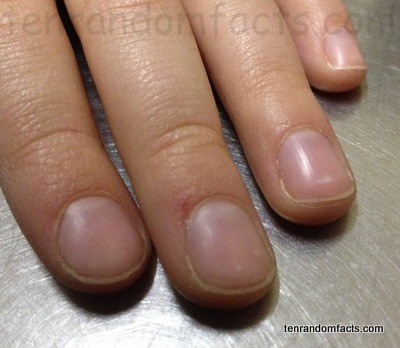Don’t bite them!
- Nails help protect the soft top part of fingers and toes and are found on humans and some animals.
- Nails are made of keratin, a protein that is also found in hair and skin, and animal horns and hooves.
- Nails consist of a ‘nail plate’, which is the hardest part of the nail; a ‘nail bed’, which is the softer skin underneath the nail; and the ‘matrix’, which is the soft tissue that the nail protects underneath the base of the nail that contains blood vessels, nerves and lymph (a type of fluid).
- Nails grow an average of 2 – 3 mm (0.08 – 0.12 inches) per month, and fingernails can double their length (regrow) in three to six months, and toenails, which are slower growing, can double in length (regrow) in twelve to eighteen months.
- The white half moons on nails that are most visible on thumbs, are called ‘lunula’, and under the lunula is the section of the matrix that you can see.
- Nails are said to grow quickest in the summer months, especially when exposed to sunlight because they need vitamin D to grow, but other factors, such as age, gender, and health, can make nails grow quicker.
- Sometimes nails fall off due to disease or injury, but they generally regrow.
- Unhealthy nails that look sick in colour, or are brittle and break easily, are usually a sign that your body is lacking in vital nutrients, or that there is an internal health problem.
- Indian Shridhar Chillal holds the world record for the longest nails on a single hand, with a combined total of 6.15 meters (20 feet 2.25 inches) of fingernails on one hand, and the length of his thumb nail was over 1.20 meters (4 feet) long.
- There is a theory that white spots on your nails are from a calcium or zinc deficiency, however the spots, called Leukonychia, are generally caused by minor injury to the base of the nail (matrix), and they will normally grow out.





